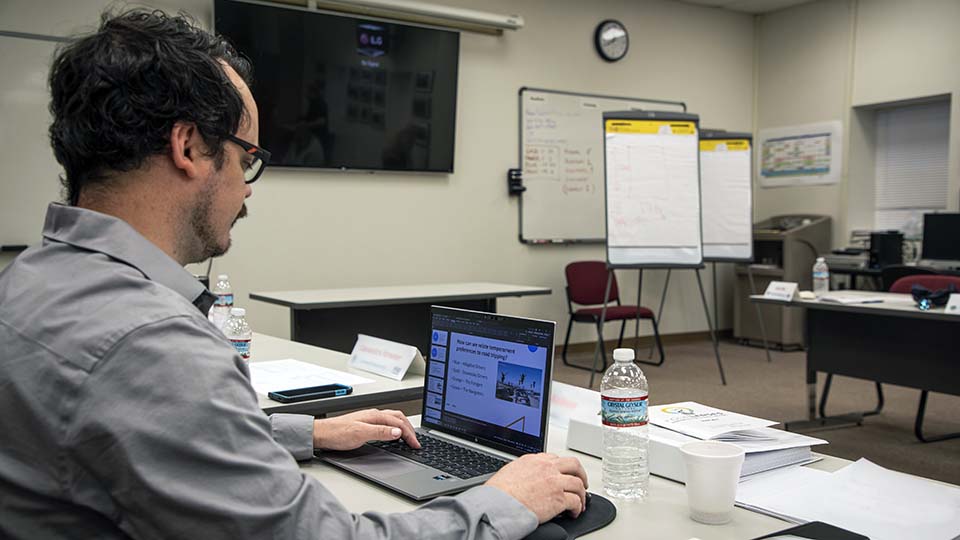Central Training Facility debuts new wireless capabilities

Wireless technology has made its way to the Central Training Facility (CTF), creating a more efficient learning environment for security police officers.
Located about 8 miles west of Y‑12, CTF is a DOE‑certified and approved weapons qualification and training facility used to equip security personnel to protect national security assets, facilities, people, and government property.
“The CTF holds a variety of courses that range from entry‑level to tactical training disciplines,” said Jay W., CTF Range Operations manager.
Class sizes vary from 10 to 35 students, and courses are open to all DOE sites. The facility also holds site‑specific training and qualifications for more than 650 security police officers across three entities: Oak Ridge National Laboratory, Oak Ridge Protective Force, and Y‑12.
Trainees previously were unable to connect to the CNS network due to the lack of wired terminals. The installation of unclassified wireless access points now allows the classroom portion of the training to transition to online learning.
“Having wireless connectivity is a significant productivity gain for our facility where students previously had to share a single computer to access National Training Center coursework through a wired connection point,” Jay said. “Now, students are able to connect at any point using their laptops and cell phones.”
Collaboration among CTF, Information Solutions and Services, Safeguards and Security, and Operations Health brought project success earlier than expected.
“A WiFi signal at CTF was something we didn’t believe was possible a year ago,” said Joe R., Physical Security senior engineer. “Yet, we finished the entire process — from configuration and testing to installation — in 12 months.”
Now that the facility has the foundation to connect wirelessly, additional resources are being planned to further develop the facility and classroom training. For instance, a wireless‑enabled air‑quality monitoring system for the indoor range is being tested to fulfill an Occupational Safety and Health Administration requirement. Once operational, the system will allow range managers to observe and maintain environmental and occupational controls to protect personnel from the effects of lead, noise, or any other relevant exposures.
Training costs will also be significantly reduced over time as pages of lesson plans are moved to a web‑based platform. “Students without computers still have the option to have physical copies of the training manuals, but we’re looking forward to being able to go fully electronic,” Jay said.
To support a full‑time online training environment, the facility’s goal is to establish a wireless computer lab by Fiscal Year 2025 after evaluations and testing are complete. As of March, the CTF conducted a test bed with a basic instructor class of 16 personnel.
“Once finished, the computer lab will give us the option to completely eliminate the need to print training materials,” Jay said. “Based on current manuals at 750 pages for each student, we estimate that we’ll save approximately 26,250 pages per training class, plus have the availability to apply updates automatically without reprinting.”
Installing unclassified wireless at the CTF is a sign of progress, and Digital Transformation integrated product teams are continuing to make risk-informed decisions to enable wireless in other areas across the site while complying with technical security, cybersecurity, and NNSA requirements.
“Our end goal is to implement solutions that support access to business, security, and operations systems site‑wide through wireless technology,” said Mark P., Digital Transformation senior manager. “Right now, we are still in the process of determining requirements and maturing technical implementation plans to address any potential wireless vulnerabilities and ensure that we’re delivering the best product for our mission.”
